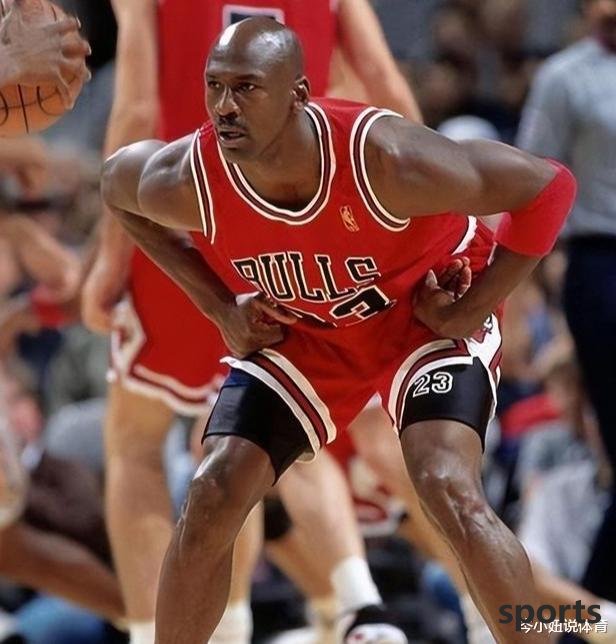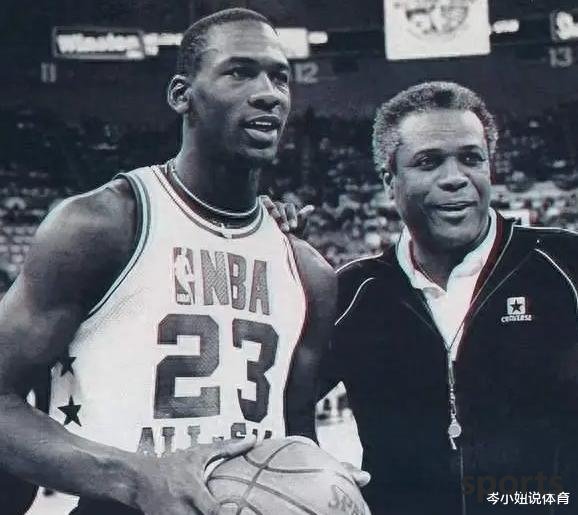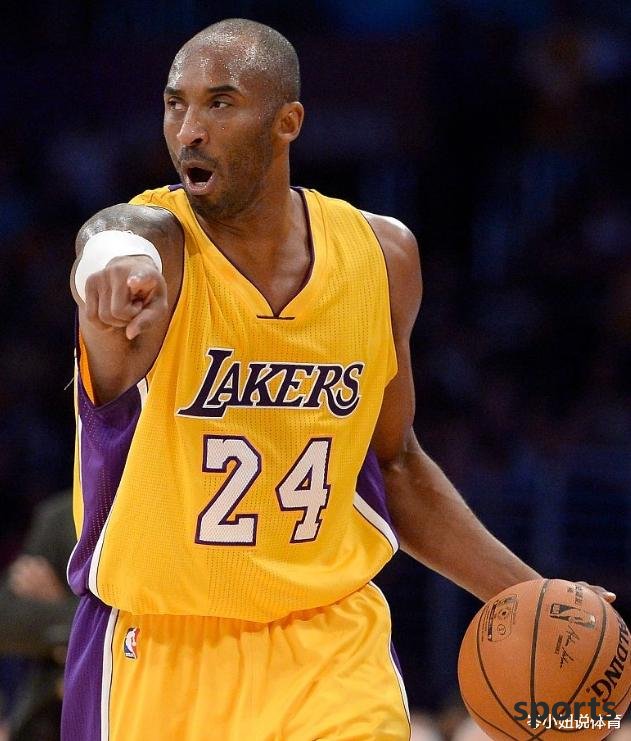QQ-Sports > Basketball > Jordan s only weakness is that his three-pointers are relatively poor, and the others are top-notch strengths
Jordan s only weakness is that his three-pointers are relatively poor, and the others are top-notch strengths
On July 21, Michael Jordan was hailed as the greatest player in basketball history, and his career was full of brilliant achievements and incredible performances. Whether it’s scoring ability, defense, leadership or critical moment performance in the game, Jordan has reached the top level in almost every aspect. However, if you have to find one of Jordan's technical weaknesses, it may be that his three-point shooting ability is slightly inferior to other skills. But this "weakness" is more of a product of the era background than a lack of his personal abilities.

In Jordan's career, three-pointers were not the main offensive method of the game. In the 1980s and 1990s, the NBA's game style focused more on inside scoring and mid-range jump shots, and three-pointers have not yet become the core part of the team's tactics. At that time, teams and players paid far less attention to three-pointers than today, and many coaches even believed that three-pointers were a "gambling" shooting choice. Therefore, Jordan's shooting training and game strategy also revolves around mid-range and breakthroughs, and three-pointers are just weapons used occasionally. Despite this, Jordan's three-point shooting ability is not bad, but it is not that outstanding compared to his other nearly perfect skills.
Judging from the data, Jordan's three-point shooting percentage career was 32.7%, which was not bad at the time, but there was indeed a certain gap compared to the top modern shooters. For example, the three-point shooting percentage of active players such as Stephen Curry, Klay Thompson and others has remained above 40% year-on-year. However, this contrast is not entirely fair, as modern basketball’s three-pointers tactics, training methods and game rhythms are very different from those of the Jordan era. Jordan's three-pointer is more a tactical supplement than a main scoring method. In the 1992-93 season, Jordan scored 35.2% of his three-point shooting percentage, and in the 1995-96 season, he even made 111 three-pointers with a shooting percentage of 42.7%, proving that he is fully capable of improving his outside shooting level when needed.

It is worth mentioning that Jordan's three-point shooting performance at a critical moment was not bad. In the first game of the 1992 Finals against the Portland Trail Blazers, Jordan scored 6 three-pointers in the first half, setting a record in the finals at that time, scoring 35 points in the game, helping the Bulls win. This performance fully demonstrates that when he was required to shoot three-pointers in the game, Jordan was able to stand up. In addition, Jordan also hit a crucial three-pointer in the key "Flu Battle" in the 1997 Finals, helping the Bulls secure the victory. These examples show that Jordan's three-point shooting ability is not bad at critical moments, but can become one of his weapons.
If Jordan played in today's NBA era, his three-point shooting ability would likely be another strength for him. Modern basketball's dependence on three-pointers is far more than that of Jordan's era. Players have started to train outside shooting since childhood, and the tactical system also revolves around three-pointers. With Jordan's professional attitude and continuous excellence in his skills, he is fully capable of adapting and improving his three-point shooting level. Jordan's mid-range shooting and free throw shooting percentage (83.5% of his career) has proven his excellent shooting feel, while a three-pointer is just an extension of the shooting distance. If he uses 3-pointers as a regular weapon like a modern player, his three-point shooting percentage is likely to be significantly improved through systematic training and tactical support.

In addition, Jordan's physical fitness and athleticism also provide guarantees for his three-point shooting potential. His bounce and shooting height make it difficult for him to be blocked, while his core strength ensures stability in long-distance shooting. In the modern NBA, many players improve their three-point shooting percentage by improving their core strength and adjusting their shooting mechanisms, and Jordan fully has this condition. His competitive spirit and desire to win will also drive him to constantly polish his external skills until he reaches the top level.
Of course, Jordan's three-pointer "weakness" does not affect his historical status. His scoring ability, defensive deterrence, leadership and game influence have long exceeded the limitations of a single technical indicator. Even with less prominent three-pointers, he was able to dominate the game, leading the Bulls to win six championships and five MVP awards. His comprehensiveness and control over the game are undisputed. The relative weakness of three-pointers is more of a product of the background of the times and personal tactical choices, rather than a defect in ability.
In summary, Jordan's three-pointer is indeed a relatively weak link in his technical link, but this is mainly due to the basketball style and tactical tendencies of his era. If he plays in the modern NBA, with his talent, hard work and adaptability, three-pointers are likely to be another killer for him. The greatness of Jordan is that he has reached the extreme in almost all aspects, and the "deficiency" of three-pointers is just a tiny footnote in his brilliant career, and it cannot hide his legendary brilliance as the God of Basketball.
Related Posts
Irving goes to the Rockets to team up with Durant again? It is revealed that he will also be traded. The US media strongly calls for going to Houston
BasketballOn November 13, the NBA regular season continues. As the Mavericks officially announced the firing of general manager Harrison, the Mavericks are about to usher in turmoil. Among them, it was revealed that Irving will also be traded by the team. The...
moreDoncic responds to rumors of returning to Mavericks: Focus on Lakers
BasketballSelf-media Lakers national report. Luka Doncic commented on Nico Harrison's firing, stressing that he was 'focused on the Lakers' when asked if he would return to the Mavericks. LukaDonciccommentedontheNicoHarrisonfiringandemphasizedhe &...
moreWhere to go! The Kings, who have the same record, have announced their disbandment. How long can the Clippers last?
BasketballAfter losing to the Nuggets, the Kings' record this season has reached 3 wins and 8 losses. The team's lineup no longer has the strength to enter the playoffs in the Western Conference. Therefore, in the early morning of November 12, the Kin...
more
Hot Posts
- James announces a major decision early tomorrow morning! Su Qun: Is it the last dance or just an advertisement?
- The Lakers sign and 1 snatch, 21-man roster is released! Doncic loses his weight in a crazy way, and James creates history
- Just now! The Nuggets officially signed Kessler Edwards
- Pitino said: Modern basketball no longer has pure point guard
- Hu Mingxuan really thinks he is Curry, please pay attention to Guo Shiqiang s reaction, fans line up to apologize
- NBA triple-double star Westbrook joins the Kings
- Doncic has made efforts, and the Lakers are talking about the deal between Kneckett and Kleber!
- Bain s transaction value exceeds Doncic? Harrison was crazily mocked again: the worst general manager in history
- Lose 30 points and go home! The team that defeated James was eliminated by the Thunder. The more miserable the Timberwolves are, the more difficult the Lakers are.
- It s not reliable at all! The Thunder s powerful pitcher has almost no decent performance in the playoffs?
Recent Posts
-
Is Ayton so bad? The US media suggested that the Lakers exchange 3 for 1 Kessler: Sacrifice the king and two protected first-rounders
-
Did Yang Hansen trade make money? Averaged 19+3 in three games in the regular season! The Grizzlies sent away Bane and ushered in a new third-in-command
-
Rebuilding or trading, the moment to determine the fate of the Rockets is coming, it s really exciting
-
The Hornets make a small profit! The new backcourt players may attract widespread attention if they continue to perform efficiently?
-
Shams: Lively dies before he succeeds, and the third player in the Mavericks core 2-man team
-
Arenas hit back at Barkley: How did you perform in your 40-year-old final season? You are not qualified to belittle Old James
-
A-Smith talks about his grudges with James again: I only mentioned Brownie once, and he said I have been targeting him
-
Redick s contract renewal for two years in advance: He will benefit first by selling it for 10 billion yuan
-
Rockets reporter: Jaylen Green repeatedly emphasized to me that the Suns will arrange for him to play the starting point guard
-
I want to hug my thighs, but it turns out to be my thighs themselves! These 5 people are talking about: Harden and Azan lead the lead